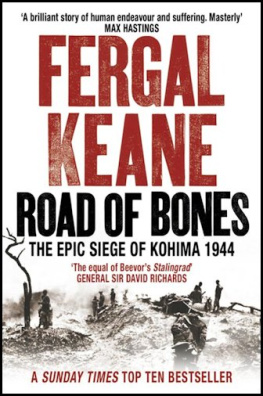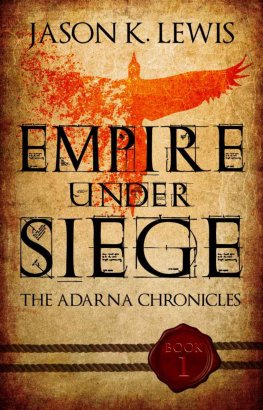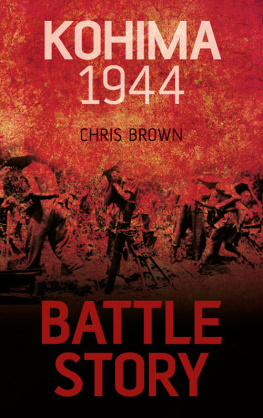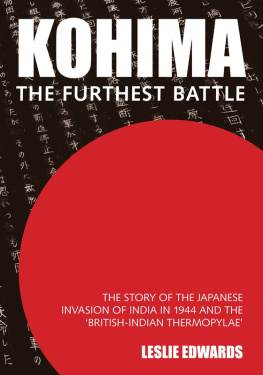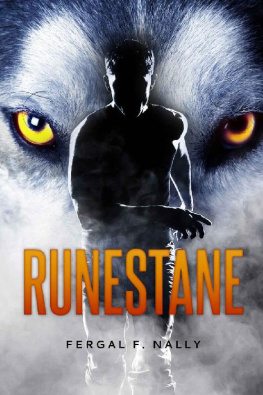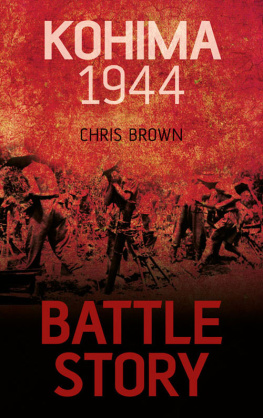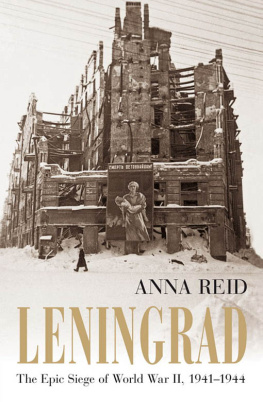Fergal Keane - Road Of Bones: The Siege Of Kohima 1944 The Epic Story Of The Last Great Stand Of Empire
Here you can read online Fergal Keane - Road Of Bones: The Siege Of Kohima 1944 The Epic Story Of The Last Great Stand Of Empire full text of the book (entire story) in english for free. Download pdf and epub, get meaning, cover and reviews about this ebook. year: 2013, publisher: William Collins, genre: History. Description of the work, (preface) as well as reviews are available. Best literature library LitArk.com created for fans of good reading and offers a wide selection of genres:
Romance novel
Science fiction
Adventure
Detective
Science
History
Home and family
Prose
Art
Politics
Computer
Non-fiction
Religion
Business
Children
Humor
Choose a favorite category and find really read worthwhile books. Enjoy immersion in the world of imagination, feel the emotions of the characters or learn something new for yourself, make an fascinating discovery.
- Book:Road Of Bones: The Siege Of Kohima 1944 The Epic Story Of The Last Great Stand Of Empire
- Author:
- Publisher:William Collins
- Genre:
- Year:2013
- Rating:4 / 5
- Favourites:Add to favourites
- Your mark:
- 80
- 1
- 2
- 3
- 4
- 5
Road Of Bones: The Siege Of Kohima 1944 The Epic Story Of The Last Great Stand Of Empire: summary, description and annotation
We offer to read an annotation, description, summary or preface (depends on what the author of the book "Road Of Bones: The Siege Of Kohima 1944 The Epic Story Of The Last Great Stand Of Empire" wrote himself). If you haven't found the necessary information about the book — write in the comments, we will try to find it.
Road Of Bones: The Siege Of Kohima 1944 The Epic Story Of The Last Great Stand Of Empire — read online for free the complete book (whole text) full work
Below is the text of the book, divided by pages. System saving the place of the last page read, allows you to conveniently read the book "Road Of Bones: The Siege Of Kohima 1944 The Epic Story Of The Last Great Stand Of Empire" online for free, without having to search again every time where you left off. Put a bookmark, and you can go to the page where you finished reading at any time.
Font size:
Interval:
Bookmark:
ROAD OF BONES
THE SIEGE OF KOHIMA 1944
THE EPIC STORY OF THE LAST
GREAT STAND OF EMPIRE

FERGAL KEANE

In memory of John Shipster, soldier.
CONTENTS
The dreams of empire lure the hearts of kings and so men die
CORPORAL G. W. DRISCOLL, BURMA, 1944
In the morning the general left his house after breakfast and walked into the country. He did this for two years. In the heat of summer the old soldier found the going harder. He sweated heavily and his bones hurt in the evenings. When the winter came he wore an old army greatcoat and walked along the ridges of the frozen rice paddies. He did not stop when the snows came and might amuse himself by trying to count the white geese in the fields. It was hard to tell where the snow ended and the birds began. The general was born here in Yamagata, among fishermen and farmers on the north-east coast of Japan. Here, in the town that lay between the mountains and the sea, he would atone for the great disaster. Every time a soldiers bones came home from the front he would set out on his travels. I will finish this before I die, he told his son.
Kohima. It lived with him every day of his life. All of the men who had followed him lying in unmarked graves, lost along the mountain tracks, or drowned in the Chindwin river. At every house he bowed and introduced himself and having been invited in he would remove his shoes and sit with the family. Sometimes it would be a woman with young children, at other times a widow alone, or elderly parents. But all of them were linked to the general by the most immutable of bonds. He had taken their sons, husbands, fathers, over the mountains to India and they had not come back. At times they showed him photographs and letters. Many expressed surprise at his visit. The generals of the Imperial Japanese Army were not usually to be found calling on the homes of ordinary soldiers. The general carried a candle in his pocket and he would light this and read a poem for the dead. Its exact words have been lost with time, but he spoke of the soldiers courage and how sorry he felt that they had lost their lives. His son, Goro, believed Lieutenant General Kotuku Sato wished he had died with them. I had the impression that he had very strong feelings of loss over what happened to his men on the battlefield, he said. The general knew there were many officers who believed he should have killed himself. How could he live with the shame of such a defeat?
I listen to the story in Goro Satos home in Ibaraki. He produces photo albums, a whole bundle of them, devoted to his fathers memory. There are pictures of Kotuku Sato in cadets uniform which date from the beginning of his career in the early 1920s. Later, in the 1930s, he is photographed standing next to Emperor Hirohito at a military exercise. There are images of the rising young officer dressed in furs and heavy boots on the Chinese border, and one of him relaxing in a kimono with a glass of sake and a broad smile on his face. There is one intriguing image. The general is dressed in a white linen suit, standing next to an American-made car. The photograph was taken outside a pagoda somewhere in South-East Asia. The general looks much older. There is a wariness in his expression that was not present in the earlier images.
Where is that? I ask.
That is in Java, after he was relieved of his command, Goro responds. He then tells me that a more senior general tried to have his father declared insane. He sent a medical team to Java to examine him. The rumour was that he was crazy. How else could they explain what he had done? he says. But the doctors found that Sato was entirely sane. It is easy to see how his superiors might have thought him mad. A Japanese commander did not disobey orders to stand firm, he fought to the death. You must never forget that the men who survived loved him, said Goro. They were only alive because of him.
By the Japanese account nearly half of the 84,000 men of the 15th Army who marched into India were killed or died of starvation and disease. It was a disaster without parallel in the history of the Imperial Army. General Satos 31st was one of three divisions of the 15th Army which crossed the Chindwin river in March 1944. Of his 15,000 strong force, almost half would never return, and those who did were emaciated fever-ridden ghosts. Yet Satos march into India had started with victory. The 31st Division had annihilated every outpost in their way until they came to the small town of Kohima in the Naga Hills. Over two weeks of savage fighting they were held off by a British and Indian garrison which they outnumbered by ten to one. The defenders were a mix of battle-hardened veterans and novices, thrown together in the last hours before the Japanese arrived. By the end, the defenders perimeter was down to a circumference of just three hundred yards, into which the Japanese fired shell after shell, blasting the wounded as they lay in open pits. In the trenches men fought with guns, knives, spades, anything they could lay their hands on. A British infantryman, Mark Lambert of 4th battalion, Queens Own Royal West Kent Regiment, recalled, We were being shot at and shooting, we were kicking, using our rifles as hammers, using the butts of our rifles if they got close. From both sides we were animals. In one action a British subaltern sent his Indian troops to safety and faced the Japanese alone, a pile of grenades by his side and a gun in each hand. Another strangled a Japanese soldier, having woken next to him in a trench. Japanese officers charged with swords drawn into the teeth of British machine-gun fire.
Much of the fighting centred on a tennis court where men pitched grenades back and forth. Above all, the defenders were determined not to be taken alive by an enemy with a well-deserved reputation for cruelty. There were legion well-documented stories of prisoners being cruelly mutilated while still alive, or tied to trees for bayonet practice. They had murdered people in the dressing stations and we just thought they were animals. We thought they had forfeited their right to be treated as humans because they didnt behave like humans, recalled Major John Winstanley of 4th battalion, the Royal West Kents.
Both sides fought and died among the rotting corpses of their comrades. For Sepoy Mukom Khiamniungan of the Assam Regiment the battlefield remains a haunted place to this day. I find Kohima appalling. By that I mean its a place where airplanes and bombs had mixed flesh and earth. Thats why I dont like staying there. I dont even have tea when I pass there.
The defeat at Kohima precipitated the collapse of Japanese power in Burma and destroyed forever the Japanese soldiers belief in his invincibility. A song written by a survivor from the Japanese 58th Regiment described how their positions were bombed by allied aircraft:
In the jungle, covered with green Afternoon showers of bombing Vegetation scattered, turning to empty field Not a bird song to be heard.To the Japanese the retreat was the road of the bones. Starving men begged their comrades to shoot them or blew themselves up with grenades. Lieutenant Yoshiteru Hirayama, a machine-gunner with 58th Regiment, saw dead soldiers lying along the river bank and others pleaded with him for scraps. Most were too weak even to do that, he recalled, I didnt have food to give them.
For the British it was a close affair. The defenders of Kohima and its smaller outposts bought vital time to bring in reinforcements. Even so it took another six weeks of bitter fighting for British and Indian troops to drive the Japanese from their well entrenched positions at Kohima. The story of the two week siege provides the core of this narrative not only because it describes an extraordinary struggle against great odds but because it offers a vivid portrait of a defining moment in the fortunes of two imperial powers. Both were in decline, and both desperately needed victory. It was the stand of the Kohima garrison which denied the Japanese a swift triumph and gave General William Slims 14th Army the platform on which to launch his campaign to rout a battle hardened enemy. Kohima is a story of empires colliding in a world where high imperialism was already an anachronism, and where defeat might have profoundly altered the story of the end of the British Raj. The India that the men of 14th Army fought to defend was struggling to free itself from British control. As the battle of Kohima was taking place the countrys main political leaders languished in colonial jails. Britain had brought India into the war without any reference to her people. The Viceroy, Lord Linlithgow, declared the war a fight for freedom and democracy, prompting the Congress leader Jawaharlal Nehru to ask, Whose freedom? But Nehru also knew that the war represented the last stand of British rule in India, and that defeat by Japan could change the political dynamic in ways that neither he nor any other Indian leader could predict or be certain of controlling.
Next pageFont size:
Interval:
Bookmark:
Similar books «Road Of Bones: The Siege Of Kohima 1944 The Epic Story Of The Last Great Stand Of Empire»
Look at similar books to Road Of Bones: The Siege Of Kohima 1944 The Epic Story Of The Last Great Stand Of Empire. We have selected literature similar in name and meaning in the hope of providing readers with more options to find new, interesting, not yet read works.
Discussion, reviews of the book Road Of Bones: The Siege Of Kohima 1944 The Epic Story Of The Last Great Stand Of Empire and just readers' own opinions. Leave your comments, write what you think about the work, its meaning or the main characters. Specify what exactly you liked and what you didn't like, and why you think so.

